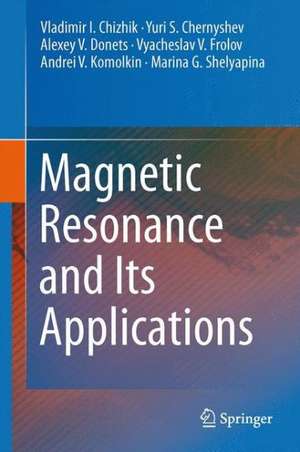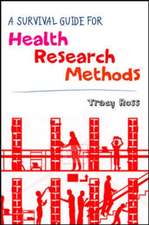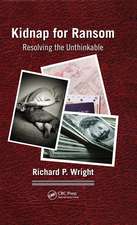Magnetic Resonance and Its Applications
Autor Vladimir I. Chizhik, Yuri S. Chernyshev, Alexey V. Donets, Vyacheslav V. Frolov, Andrei V. Komolkin, Marina G. Shelyapinaen Limba Engleză Hardback – 22 apr 2014
| Toate formatele și edițiile | Preț | Express |
|---|---|---|
| Paperback (1) | 1346.12 lei 39-44 zile | |
| Springer International Publishing – 3 sep 2016 | 1346.12 lei 39-44 zile | |
| Hardback (1) | 1445.00 lei 3-5 săpt. | |
| Springer International Publishing – 22 apr 2014 | 1445.00 lei 3-5 săpt. |
Preț: 1445.00 lei
Preț vechi: 1521.05 lei
-5% Nou
Puncte Express: 2168
Preț estimativ în valută:
276.50€ • 288.12$ • 228.94£
276.50€ • 288.12$ • 228.94£
Carte disponibilă
Livrare economică 13-27 martie
Preluare comenzi: 021 569.72.76
Specificații
ISBN-13: 9783319052984
ISBN-10: 3319052985
Pagini: 804
Ilustrații: XX, 782 p. 234 illus.
Dimensiuni: 155 x 235 x 48 mm
Greutate: 1.29 kg
Ediția:2014
Editura: Springer International Publishing
Colecția Springer
Locul publicării:Cham, Switzerland
ISBN-10: 3319052985
Pagini: 804
Ilustrații: XX, 782 p. 234 illus.
Dimensiuni: 155 x 235 x 48 mm
Greutate: 1.29 kg
Ediția:2014
Editura: Springer International Publishing
Colecția Springer
Locul publicării:Cham, Switzerland
Public țintă
ResearchCuprins
Interaction between nuclei and electrons and their interaction with external electromagnetic fields.- Part I Nuclear magnetic resonance (NMR).- Basic principles of detection of nuclear magnetic resonance.- Nuclear magnetic relaxation.- Nuclear Magnetic Resonance in Liquids.- Nuclear magnetic resonance in diamagnetic solids.- Nuclear Magnetic Resonance in Liquid Crystals.- Nuclear magnetic resonance in magnetic materials.- Part II Nuclear quadrupole resonance (NQR).- Nuclear quadrupole resonance.- Experimental methods in NQR.- Part III Electron paramagnetic resonance (EPR).- Basic interactions of an electron in solids.- Energy levels of paramagnetic center in crystal field.- Covalent-coupled paramagnetic.- Fine structure of EPR spectra in solids.- Electron-nuclear interactions and hyperfine structure of EPR spectra.- Part IV Double resonances and polarization transfer.- Double resonances.- Two-dimensional NMR Fourier spectroscopy.- Part V Quantum radiofrequency electronics (radioelectronics).- Basic physical ideas of quantum radioelectronics.- Generators with molecular and atomic beams.- Quantum amplifiers based on electron paramagnetic resonance.- The use of optical radiation in quantum radioelectronics devices.- Magnetic resonance quantum magnetometry.
Textul de pe ultima copertă
The book is devoted to the description of the fundamentals of various radiospectroscopic methods in the area of magnetic resonance and their use for the investigation of molecular structure and dynamics and for some technical applications. This book covers two domains: radiospectroscopy and quantum radioelectronics.
Radiospectroscopy comprises nuclear magnetic resonance (NMR), electron paramagnetic resonance (EPR), nuclear quadrupolar resonance (NQR), and some other phenomena. The radiospectroscopic methods are widely used for obtaining the information on internal (micro and macro) structure of objects investigated. There are no direct analogues of magnetic relaxation processes among the physical phenomena that define spectra in infrared, visible and higher frequency spectroscopy. Relaxation parameters are directly related to molecular mobility and thus represent an unique source of information on velocity and types of thermal motion. One of the most spectacular developments is the concept of double (multi) resonances (NMR–ESR, NMR–NQR, NMR–NMR and so on).
Quantum radioelectronics, which was developed on the basis of radiospectroscopic methods, deals with processes in quantum amplifiers, generators and magnetometers. These devices possess record-breaking characteristics: quantum generators demonstrate the highest frequency stability; quantum amplifiers possess the lowest level of set noise; quantum magnetometers are very fruitful tool for measuring weak magnetic fields (such as the Earth field).
The introductory chapter provides the necessary underpinning knowledge for newcomers to the methods. The exposition of theoretical materials goes from initial to final formulas through detailed intermediate expressions.
Radiospectroscopy comprises nuclear magnetic resonance (NMR), electron paramagnetic resonance (EPR), nuclear quadrupolar resonance (NQR), and some other phenomena. The radiospectroscopic methods are widely used for obtaining the information on internal (micro and macro) structure of objects investigated. There are no direct analogues of magnetic relaxation processes among the physical phenomena that define spectra in infrared, visible and higher frequency spectroscopy. Relaxation parameters are directly related to molecular mobility and thus represent an unique source of information on velocity and types of thermal motion. One of the most spectacular developments is the concept of double (multi) resonances (NMR–ESR, NMR–NQR, NMR–NMR and so on).
Quantum radioelectronics, which was developed on the basis of radiospectroscopic methods, deals with processes in quantum amplifiers, generators and magnetometers. These devices possess record-breaking characteristics: quantum generators demonstrate the highest frequency stability; quantum amplifiers possess the lowest level of set noise; quantum magnetometers are very fruitful tool for measuring weak magnetic fields (such as the Earth field).
The introductory chapter provides the necessary underpinning knowledge for newcomers to the methods. The exposition of theoretical materials goes from initial to final formulas through detailed intermediate expressions.
Caracteristici
The book provides a basic understanding of the underlying theory, fundamentals and applications of magnetic resonance The book implies a few levels of the consideration (from simple to complex) of phenomena, that can be useful for different groups of readers The introductory chapter provides the necessary underpinning knowledge for newcomers to the methods The exposition of theoretical materials goes from initial to final formulas through detailed intermediate expressions Includes supplementary material: sn.pub/extras













